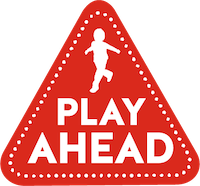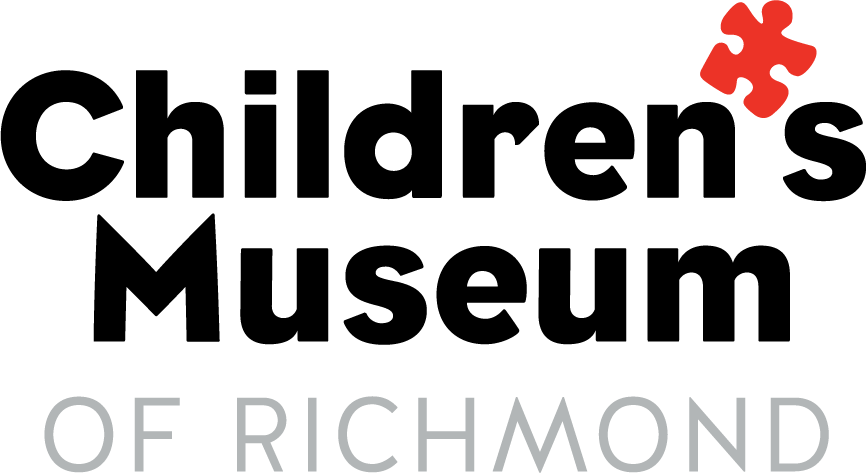Learning is Always in Play
7 Essential Life Skills Children Develop by Playing
Of the casual observer, seeing children at play may not look like much at all — a fun and often silly way for kids to pass the time with their friends, neighbors and classmates, but nothing more than that.

But make no mistake: while play is often fun and silly (and should be!), it’s also a crucial element to encourage healthy development in children, fostering skills that will stay with them well into adolescence and adulthood.
From fundamental educational concepts to socialization skills, research clearly shows that play has a positive impact on a child’s academic performance — and the more often they engage in play, in an environment such as the Children’s Museum, the more likely they are to find success both inside and outside the classroom.
The Children’s Museum is more than just a fun place for children to play — it’s also an active resource for the whole family to play, learn and grow together.
At the Children’s Museum, children’s growth is inspired by engaging families in the power of play, knowing that everyone can learn more — and develop more rapidly — when they play together. Or to put it another way, when children play ahead, they get ahead!
Of course, your children may be too busy having fun to notice all the learning that occurs when they play. Below, you’ll find seven different examples of types of play to explore with your children, along with the life skills that they help to promote, and examples of just some of the Children’s Museum exhibits that fuel learning through play.
1. Problem-Solving Skills
When children are given the opportunity to easily and confidently explore different outcomes and alternative processes within their playtime, it serves to develop their ability to use problem-solving skills in a creative manner. The type of play that encourages this development is commonly known as exploratory play.
In exploratory play, children can often be seen tinkering with any manner of objects, but what they’re really doing is discovering the objects’ particular properties, what those properties represent and how those properties react to different acts of manipulation (think of a child’s realizing that a ball will bounce — and then turning their attention to see if the same is true for an apple). Through trial and error, children are learning about the different uses and functions that a particular object may hold.
Opportunities for exploratory play are easy to discover at each of the Children’s Museum’s locations, where children can see how a flowing stream impacts different objects as they splash through the fun water play stations, dig for “dinosaur bones” in a dig pit or predict precisely where and when the next apple will fall from the tree!
Exhibit Spotlights:
- Downtown: Water Play, SplashMoR, Apple Tree, Sun Tubes, Cave
- Chesterfield: Berry Bush, Apple Tree, Water Play, Harvest
2. Motor Development Skills
As any parent can tell you, some types of play are more physically demanding than others. But there is a benefit to what is defined as physical play that goes beyond encouraging healthy exercise habits (which is also important!).
Physical play is the term used to describe the range of activities that highlight the combination of a child’s natural energy and their physical movements, allowing them the chance to further enhance both their fine and gross motor skills.
Recent research shows that play has a positive impact on a child’s academic performance. However, physical play doesn’t necessarily always mean running, jumping or turning a somersault. Drawing, painting, singing, climbing — all of these activities are also defined as physical play, and examples of each can be found at the Children’s Museum. Both area locations feature hands-on art studios, giving children the resources and space needed to properly explore their growing motor development skills in the most creative of ways. In addition, all Children’s Museum locations feature cultural events and activities throughout the year, which often include music, singing and dancing.
Meanwhile, climbing is a constant activity at both Children’s Museum locations. Downtown, there is a giant treehouse located in the very center of the museum as well as fabulous outdoor playground areas. At our Chesterfield location, parents can watch their children climb in the Under the Sea Climber or on the giant Tire Tower. No matter which Children’s Museum location you visit, your child will always find areas that encourage physical play.
Exhibit Spotlights:
- Downtown: Living Treehouse, Back Yard
- Chesterfield: The Climber, Tire Tower
3. Language Skills
There are many components to language development in children, which can be helped along by the act of verbal play. Starting as infants, children begin to understand how sounds are put together, ultimately learning how to segment their speech away from a single continuous string of sounds and into separate words.
The Children’s Museum provides many resources that can assist children in their language development, through singing, learning rhymes, reading aloud and listening to other readers as well. “Bilingual Storytime” is a great way to explore new languages and deepen early literacy.
Exhibit Spotlights:
- Downtown & Chesterfield: Guests will find Exhibit Guides that can help caregivers be more intentional about using related vocabulary and deepening early literacy skills throughout the exhibits.
4. Spatial Skills and Coordination
When a child’s playtime activity helps them develop their spatial skills and hand-eye coordination, this is known as constructive play. Whether it’s building a tower out of cardboard boxes or connecting a string of magnets to make a mighty fortress that surrounds a toy castle, constructive play allows children to better understand basic object functions — such as stacking, building, constructing and drawing — while discovering on their own that some constructive options work well, while others do not.
Constructive play also connects a child’s mental activity with the actions of their hands and fingers, further promoting their abilities to discover new possibilities. It’s naturally a very hands-on process, allowing children to learn something new by physically interacting with and manipulating their playtime materials.
At both locations of the Children’s Museum, floor activities use both toys and ordinary household items to encourage children to test spatial relationships, along with related counting and sorting activities that help promote early math skills. Using a variety of loose materials to design a structure or scene is also a part of constructive play, including art experiences that involve creating something new, helping to encourage innovation. Plus, using light tables, children can investigate new color and shape combinations, creating intriguing patterns of light as they sort and arrange objects.
Exhibit Spotlights:
- Downtown & Chesterfield: Art Studios, Floor Programming
- Downtown: CarMax Mechanic Garage, Operation Table, Bright!
- Chesterfield: Building Block Corner, Light Table
5. Communication and Negotiation Skills
Nearly every activity you’ll find at the Children’s Museum promotes a child’s ability to play along with others and accept perspectives beyond their own, which is known as social play. Whether playing with friends, parents or family, children will engage in cooperative activities that help to hone both their communication and negotiation skills, learning how to share toys, take turns and assist others around them. Problem-solving is also a huge component of social play, as children learn how to work through their playtime problems and work together. Social play allows children to be met right where they are emotionally, cognitively and physically, which is a powerful force for connection and bonding — and it happens every day at the Children’s Museum.
Whether they know it or not, social play is a key reason that many guests visit the Children’s Museum, giving their children the chance to meet and play with children of all backgrounds — and finding opportunities for social play in nearly every activity and exhibit offered. This includes areas such as our Wegman’s Grocery Stores, where children take turns being the shopper and the checkout person, or our child-sized Diners, where children interact with others in role of the customer, the cook or the waitstaff. Even learning to wait patiently for their turn down the slide at the Treehouse can be a chance to develop sharing, cooperation and self-control skills.
Exhibit Spotlights:
- Downtown & Chesterfield: Wegmans Grocery Store, Bank, Diner
- Downtown: News Studio, Amtrak Train, Back Yard
6. Creative Skills
Creativity is both a common and crucial element of a child’s playtime activities, encouraged through a type of play known as expressive play. Expressive play is a great way for children to make their feelings and emotions visible and better understood by others around them, serving as an effective “calm down” mechanism as well. Sometimes dramatic and always creative, expressive play sets the stage for children to learn how to better cope with their own difficult emotions, such as frustrations, in a safe and nonthreatening way.
In addition to the many Children’s Museum exhibits and activities that offer opportunities for role playing, each of our locations is equipped with kid-friendly theater performance stages. Here, young actors, directors and future playwrights are free to express themselves as they please, while learning how their creative expressions can impact others. With this freedom, they are able to release their own thoughts, feelings and imaginations into the world around them, and gain some manner of self-understanding about their place in it.
Exhibit Spotlights:
- Downtown & Chesterfield: Stage or Playhouse, Art Studio
- Chesterfield: Fantastic Future Me
7. Pre-Reading and Reading Comprehension Skills
Believe it or not, pretend play is an important part of helping children to develop their pre-reading skills. When children are encouraged and given the ability to create and tell their own stories, it helps to support and strengthen the comprehension skills that will emerge at later stages, when they begin to read. Similar to expressive play, pretend play can take the form of children’s acting on stage, or fulfilling an imagined role of being someone — or something! — else, sometimes with the assistance of props or costumes, and sometimes powered by only their imagination. Discovering new ideas and allowing for curiosity through pretend play support a child’s creative skills.
Reading is also a fundamental part of the development of language skills. A 2018 study published in the journal Pediatrics concluded that promoting reading aloud and play from birth to five years has the potential to enhance not only language skills, but also social-emotional development. Providing opportunities to encourage reading — or being read to by a parent or caregiver — helps improve school readiness for prekindergarten-age children, while enhancing literacy in school-age children.
In addition, since 2012, the Children’s Museum Book Bank has given away over 100,000 books to children who can’t afford or otherwise don’t have access to books throughout Central Virginia, while the Children’s Museum Book Buggy delivers books directly to area schools and neighborhoods where young children and students need them most.
Exhibit Spotlights:
- Downtown & Chesterfield: Town Square (featuring a Bank, Grocery Store, Diner and more). Guests may also find books tucked into various exhibits.
In the end, there is no one type of play that is more important than another — in fact, the best type of play is that which combines elements of all seven, mixed together with a child’s own unique personality. At the Children’s Museum, exhibits are designed to support combinations of play types happening together. Visit our Downtown or Chesterfield Children’s Museum locations today to enjoy the unique exhibits and new experiences, always encouraging learning through play!
